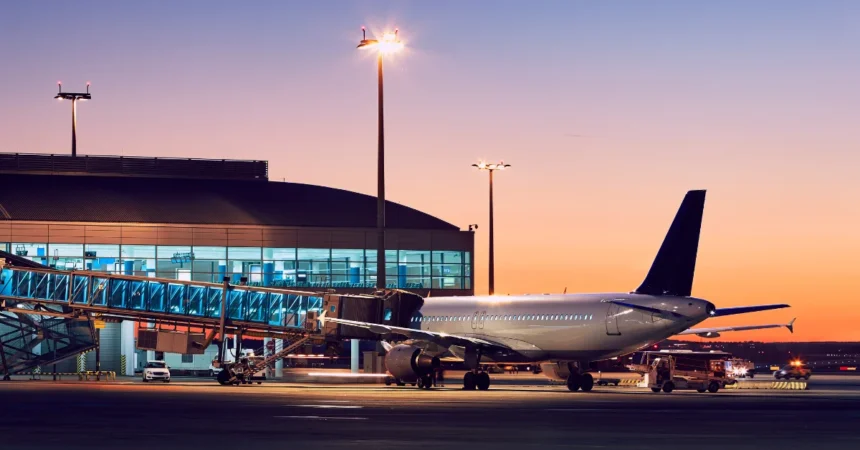Peshawar International Airport, a critical infrastructure hub in Pakistan, will be shut down for three days starting October 20, 2024, for essential maintenance work. This decision by the Civil Aviation Authority (CAA) reflects the ongoing need for upgrades and repairs to ensure the airport meets modern safety and operational standards. The impact of this closure will ripple through various sectors, affecting travelers, businesses, and the economy at large. In this article, we delve into the reasons behind the shutdown, its implications for air travel and commerce, and the broader context of Pakistan’s aviation infrastructure.
Reasons for the Shutdown
The CAA has stated that the maintenance work at Peshawar Airport is crucial for improving safety and efficiency. Regular maintenance checks are necessary to address wear and tear, ensure compliance with international aviation regulations, and enhance the overall travel experience for passengers. Specifically, the work is expected to focus on runway repairs, equipment upgrades, and facility enhancements that have become overdue due to increasing air traffic over the years.
Infrastructure improvements are particularly important at a time when the demand for air travel in Pakistan is on the rise. The country has seen a significant uptick in domestic and international flights, which has put additional pressure on existing facilities. By investing in maintenance now, the CAA aims to mitigate future disruptions and better accommodate the growing number of passengers expected in the coming years.
The shutdown of Peshawar Airport for maintenance work, as announced by the Civil Aviation Authority (CAA), is not just a reaction to immediate needs but also part of a broader strategy to enhance the country’s aviation infrastructure. With air travel in Pakistan experiencing significant growth, ensuring that airports meet international standards becomes critical. This proactive approach reflects the CAA’s commitment to improving safety protocols and operational efficiency, particularly as air travel becomes an increasingly popular mode of transport among the public.
The scope of the maintenance work at Peshawar Airport is extensive. It includes necessary runway repairs to address any existing damage that could compromise safety. Runway integrity is vital for safe takeoffs and landings, and any deficiencies can lead to serious incidents. Upgrading equipment is also a key component of this project, as modern technology plays an essential role in air traffic management and airport operations. Enhanced facilities will not only improve operational capabilities but also provide a better experience for passengers, ensuring they have access to comfortable waiting areas and efficient services.
Moreover, this maintenance initiative comes at a time when the global aviation industry is recovering from the disruptions caused by the COVID-19 pandemic. Countries around the world are focusing on revitalizing their air travel sectors, and Pakistan is no exception. By investing in airport infrastructure now, the CAA aims to position Peshawar Airport as a competitive hub for air travel in the region. This strategic move is expected to attract more airlines and increase flight frequency, ultimately benefiting the local economy through enhanced connectivity.
The shutdown, while temporarily inconvenient for travelers, underscores the importance of prioritizing long-term safety and operational excellence over short-term disruptions. The CAA has assured the public that measures are being taken to minimize the impact of the airport’s closure. They are likely coordinating with airlines to reroute flights and manage passenger expectations, providing alternatives wherever possible. Clear communication will be essential during this period to ensure that travelers are informed about the situation and any changes to their travel plans.
In conclusion, the maintenance work at Peshawar Airport is a necessary step toward modernizing Pakistan’s aviation infrastructure. With increasing passenger demand and a commitment to safety, the CAA’s decision reflects a forward-thinking approach to aviation management. As the work progresses, stakeholders will be closely monitoring the developments, and the hope is that the enhancements will lead to a significant improvement in the travel experience for all passengers. The airport’s revival will not only bolster confidence in domestic air travel but also position Pakistan favorably on the international aviation map.
Impact on Travelers
The shutdown will undoubtedly disrupt travel plans for many passengers. Individuals with flights scheduled during this period are advised to check with their airlines regarding alternative arrangements. Some airlines may offer rescheduled flights, while others might redirect travelers to nearby airports, such as Islamabad International Airport. This transition can be challenging for passengers, particularly those who rely on Peshawar Airport for ease of access to the region.
Moreover, the shutdown may also impact business travelers and freight transport. Peshawar Airport serves as a vital link for cargo shipments, and delays in air travel could lead to significant economic consequences. Businesses that depend on timely deliveries may face setbacks, disrupting supply chains and operations. Consequently, it is crucial for stakeholders in the transportation and logistics sectors to prepare for potential challenges arising from the airport’s temporary closure.
Economic Implications
Beyond the immediate inconvenience to travelers, the airport shutdown has broader economic implications for Peshawar and the surrounding region. The airport plays a significant role in facilitating trade and commerce, contributing to the local economy by connecting businesses to national and international markets. Disruptions to air travel can hinder the movement of goods, leading to delays that may affect various industries.
For instance, companies that rely on imported materials or export their products may experience bottlenecks. Additionally, local businesses that cater to travelers, such as hotels and restaurants, could see a drop in revenue during the closure. The economic impact of the airport shutdown underscores the importance of reliable transportation infrastructure in supporting local economies.
Importance of Ongoing Infrastructure Improvements
The closure of Peshawar Airport serves as a stark reminder of the need for ongoing investment in Pakistan’s aviation infrastructure. Many airports in the country face similar challenges, including outdated facilities and maintenance issues. As air travel demand continues to rise, the government must prioritize infrastructure improvements to ensure that airports can handle increased passenger volumes while maintaining safety standards.
The necessity of modernizing airport facilities is underscored by the global trend of increasing air travel. As more people seek to fly for both leisure and business, airports must evolve to accommodate these needs. This includes not only physical upgrades but also the implementation of advanced technologies to streamline operations and enhance the passenger experience.
Future Prospects for Peshawar Airport
While the immediate concern is the upcoming shutdown, the future of Peshawar Airport looks promising with the right investments. The CAA’s commitment to regular maintenance and upgrades is essential for ensuring that the airport remains competitive and capable of meeting the needs of travelers. As the local economy continues to grow, the airport can play a pivotal role in fostering regional development by enhancing connectivity and facilitating trade.
Furthermore, as Pakistan strives to improve its international standing in aviation, Peshawar Airport could benefit from increased investment and collaboration with international partners. By adopting best practices from airports around the world, Peshawar can modernize its facilities and services, attracting more airlines and passengers in the process.
The upcoming three-day shutdown of Peshawar Airport highlights the critical need for ongoing maintenance and infrastructure improvements in Pakistan’s aviation sector. While the temporary closure may disrupt travel plans and have economic implications, it also represents an opportunity to enhance the airport’s capabilities for the future. As stakeholders navigate the challenges posed by the shutdown, it is imperative that investments in aviation infrastructure remain a priority for the government and the CAA.
By ensuring that Peshawar Airport is well-equipped to handle the demands of modern air travel, Pakistan can strengthen its position in the global aviation market, fostering economic growth and improved connectivity for its citizens. As the aviation landscape continues to evolve, the commitment to infrastructure development will play a vital role in shaping the future of air travel in Pakistan.
#PeshawarAirport #AirportShutdown #AviationInfrastructure #TravelNews #PakistanAviation







